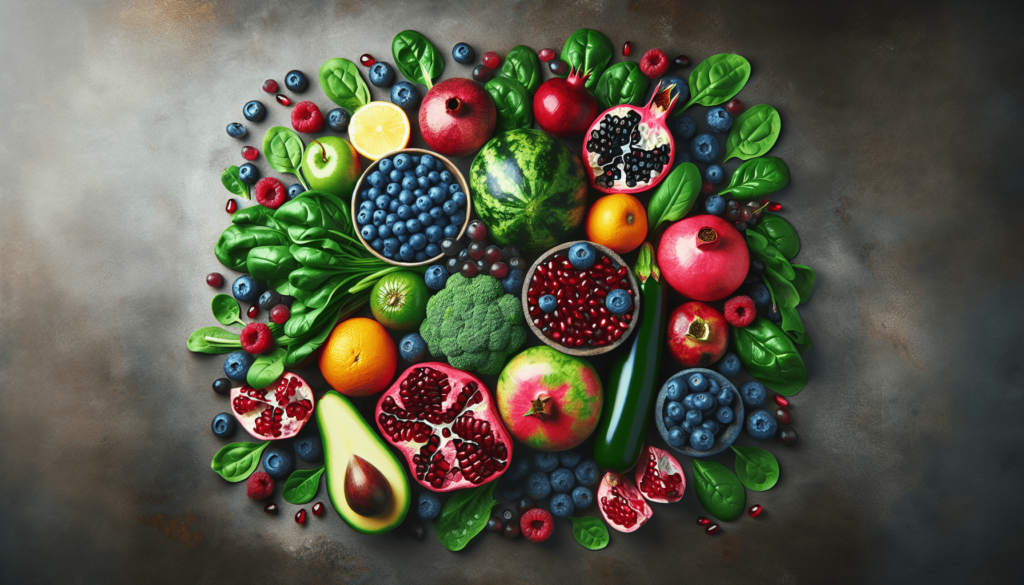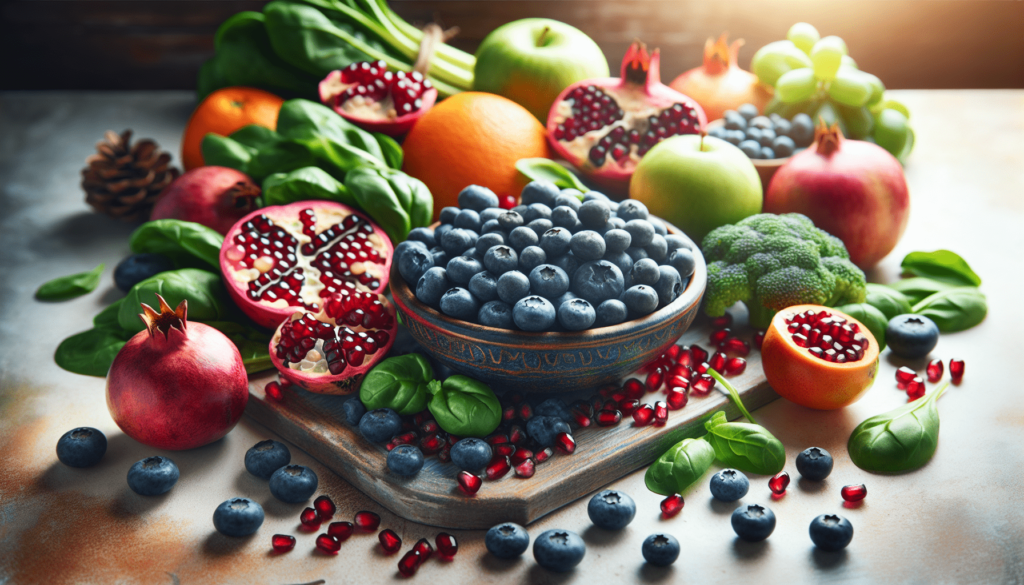Have you ever been so sore after a workout that you find yourself considering hiring a team of tiny people with hammers to beat out the kinks in your muscles? Or perhaps you’ve pondered whether you’ve truly aged overnight as you hobble around like Grandma Martha chasing after her wayward cat? Yes, muscle recovery can feel downright comedic—think Charlie Chaplin doing the limbo with joints that creak like floorboards in a haunted house. So, what’s the secret sauce to returning your poor, overworked muscles to their pre-exercise glory? Brace yourself, because today’s superhero reveal isn’t a muscled Adonis but rather a microscopic one: antioxidants.
What Are Antioxidants, Anyway?
Let’s start at the very beginning—a very good place to start (cue the song from The Sound of Music). Unless you’ve been living under a rock or in a Wi-Fi dead zone—which might actually be the same thing these days—you’ve probably heard the term “antioxidant” thrown around like a basketball at an NBA game. In your cereal? Check. In your skincare products? You bet. But what even are these invisible do-gooders?
In scientific terms, antioxidants are molecules that can donate an electron to a free radical without turning into a free radical themselves. Imagine them as the selfless Martyrs of the Molecular World—always sacrificing their own stability for the greater good. In less scientific (and more approachable) lingo, antioxidants are the balancers in a world full of radicals looking to start a brawl.
Free Radicals: The Antagonists in Our Tale
To understand antioxidants, you first need to get cozy with their villainous counterparts: free radicals. Picture free radicals as those overly energetic toddlers at family gatherings. They’re hyperactive, potentially destructive, and generally untethered unless someone (or something) keeps them in check. Free radicals are the natural byproduct of our body’s metabolism and, believe it or not, some are actually useful most of the time. Ah, but the plot thickens! When they are left unsupervised and accumulate, they can unleash oxidative stress—think of stress times wooziness squared, but for your cells.
The Interplay of Antioxidants and Free Radicals
Now your body plays an epic game of cops and robbers. The antioxidants are the law enforcement officers, maintaining order and donating electrons to the free radicals. This neutralizes the effect of the radicals, preventing them from looting and pillaging through vital cellular resources or, more realistically, causing cell damage. A happy equilibrium is the name of the game.
Antioxidants to the Rescue During Recovery
Moving swiftly forward like caffeinated penguins—which honestly would be hilarious to watch—let’s uncover why antioxidants are essential for recovery. You’ve put your body through its paces, whether you’ve completed a high-intensity workout or simply ascended those daunting two flights of stairs at work. Your muscles are humming with the effects of exercise, which can lead to—you guessed it—oxidative stress.
The Recovery Process: Fast vs. Sloth-Paced
Muscle recovery is the check-in counter of bodily processes—it ought to be as fast and efficient as possible, except without the queue and the sassy attendant. Fast recovery allows you to return to your physical feats of derring-do with gusto, minus the fear of snapping something best left unsnapped.
Antioxidants step in to speed up muscle recovery. They help to minimize the damage caused by oxidative stress after you push your muscles to their breaking point. Imagine them with tiny capes, swooping dramatically to rescue your tired tissues. With an optimal amount of antioxidants, muscles recover more quickly due to reduced cell damage and inflammation.
Antioxidant-Rich Foods: When in Doubt, Eat
You might be wondering, “Where can I find these marvelous molecules?” Well, get your shopping cart ready. Antioxidants are available en masse in several delicious and colorful foods. Let’s face it, eating your way to recovery sounds far more appetizing than other recovery methods like plunges in icy water or wearing compression clothing that makes you resemble sausage tightly wrapped in cellophane.
Here’s a quick cheat-sheet table to keep handy:
| Antioxidant | Food Source | Do I Have to Eat Kale? |
|---|---|---|
| Vitamin C | Citrus fruits, strawberries, bell peppers, broccoli | No, you don’t have to eat kale! |
| Vitamin E | Nuts, seeds, spinach, broccoli | Optional. Pretend you love it. |
| Betacarotene | Carrots, sweet potatoes, spinach | Proceed with caution if anti-orange. |
| Selenium | Brazil nuts, fish, eggs, chicken | No kale here, promise! |
| Lycopene | Tomatoes, watermelon, pink grapefruit | Delicious, not kale. Leave kale in peace. |
So, next time you’re schlepping through the grocery store, grab a rainbow mix of these foods, and your muscles will thank you—or at the very least, sulk less noticeably.

The Science Behind Antioxidants in Muscle Recovery
And now, let’s march boldly into the labyrinth of scientific inquiry. Don your lab coat and goggles, dear reader, for we’re about to get a pinch scientific. But don’t worry, we’ll come out on the other side less disoriented than a thumbtack in a washing machine.
Exercise-Induced Oxidative Stress
During intense exercise, your energy production ramps up. Congratulations, you’ve managed to turn your body into a miniature factory. But like most factories, this process has a downside: pollution. For every ATP molecule (the energy currency of your cells) produced, free radicals also get their time to shine. A right disco party, where the glitter happens to corrode your bodily infrastructure. These mischief-makers wreak havoc in your cells, chewing through proteins, fats, and even DNA if left unchecked. Sounds fun, right?
The Role of Inflammation in Recovery
Hold your horses, we’re not done with scientific-stuff! After exercise, inflammation usually sets in, like a bitter old acquaintance at a class reunion. While inflammation is a standard and necessary part of muscle repair, excessive levels lead to increased oxidative stress. It’s a Catch-22, but in real life, without the catchy phrase and funny wording. Think of antioxidants as mediators, soothing inflammation like Bon Jovi songs soothe grievances at a hard rock café.
Misconceptions and Truths About Antioxidants
Like time travel and diets that promise results based on breathing alone, antioxidants come with their fair share of myths and misperceptions. Let’s clear a few of those up before you decide to go antioxidant-crazy or start sprinkling chia seeds on everything like a nutrition-obsessed Tinkerbell.
Myth: More = Better
The common assumption is that if antioxidants are good, an avalanche of them must be better. It’s the same logic that has people buying economy-sized jars of mayonnaise, only to regret it when their fridge looks like a condiment museum. While it’s true that antioxidants can minimize cell damage, taking them in excessive amounts (through supplements, mainly) can actually reverse their effects, acting as pro-oxidants instead. Think Jekyll and Hyde, but with vitamins.
Truth: Natural is Better
Grabbing a bottle of antioxidant pills at the local pharmacy may sound easy and oh-so modern, but research suggests you’re better off sticking to food sources. Nature has a way of delivering antioxidants packed conveniently with other nutrients and fibre, ensuring your body gets the complete health package. It’s like the difference between a solo artist and a choir; both are great, but one has more depth (and possibly a catchy chorus).

Practical Tips to Incorporate Antioxidants
Before you go on, clutching your newfound antioxidant knowledge like a cat poised with newfound understanding of the vacuum cleaner, let’s look at ways to feed them into your routine without too much stress, expense, or existential questioning.
-
Cooking Methods Matter: Steaming, roasting, or eating vegetables raw helps preserve antioxidants. Boiling them may cause some nutrients to dissolve into the water—add to soup or, alternatively, throw a tea bag in and awkwardly serve antioxidant tea.
-
Variety is Key: Sure, blueberries are antioxidant rockstars, but diversity is the spice of life. Rotate through different fruits and vegetables to ensure a balanced intake.
-
Tea Time: Both green and black teas are rich in polyphenols, another form of antioxidant. So, whether you prefer to sip your tea surrounded by porcelain or in a battered old mug, your body will thank you.
-
Go Nuts (Literally): A handful of nuts or seeds packs a considerable antioxidant punch, and they make for excellent desk snacks. You’ll look wise getting your antioxidants while everyone else munches on despair in pretzel form.
-
Plan for Color: Your plate should look like a rainbow (unicorns sold separately). Different colored vegetables and fruits usually indicate different types of antioxidants.
Antioxidant Supplements: Beware the Bottled Promises
Finally, if you’re considering heading to the supplements aisle with dreams of shortcuts dancing in your head, keep reading. Just like those electric ab belts that promise a six-pack while you laze on the couch, antioxidant supplements can be tempting. Resist! Cue dramatic twist music here.
The Limited Efficacy of Supplements
Not to be a bearer of bad news, but research suggests navigating the antioxidant supplement field with more care than deciding which sock goes on first (truthfully, that doesn’t require much care, but you get the point). First, not all supplements are created equal. Some may not be absorbed as well as antioxidants from food sources.
Potential Risks of Overroutine Supplementation
Excess can be harmful because your body isn’t optimized to handle overflow. Chronic excessive intake might lead to harm instead. In the style of a melodrama: “Alas, poor antioxidants, I knew them well, but now they have turned on me!” Essentially, your cells won’t appreciate this about-face.
Putting It All Together: A Day in the Life With Antioxidants
As any soap opera aficionado knows, a good narrative arc does wonders, so let’s piece together a hypothetical day chock-full of antioxidant heroes.
-
Breakfast: Start with a smoothie made with spinach, an orange, and a sprinkle of chia seeds. Chug it down with green tea.
-
Mid-Morning Snack: A cup of vibrant berries, preferably eat them mid-gossip for truly archetypal snack behavior.
-
Lunch: Opt for a salad with tomatoes, carrots, avocado, and a handful of Brazil nuts.
-
Afternoon Tea: Try rosemary-infused black tea, pretending you’re having a fancy high tea even if you’re balancing a spreadsheet.
-
Dinner: Grilled salmon with roasted sweet potatoes and a side of broccoli. Consider orchestrating devious debates over who gets the last floret.
-
Evening Nibble: End with a square of dark chocolate because, let’s be honest, antioxidants don’t always have to be overly virtuous.
There you have it—a veritable chronicle of gourmet grazing to keep those muscles bouncing back like enthusiastic puppies.
Conclusion: Your Antioxidant Adventure
And there you have it, the role of antioxidants in recovery with possibly a side dish of irreverent humor. While they might not quite make your post-exercise aches vanish as efficiently as a magician’s assistant at a particularly impressive vanishing act, they play a significant part in enhancing recovery. By seeking antioxidants through food, shooing myth pies, and shuffling away from an over-reliance on supplements, you’re setting a supportive stage for muscles to rebound in good measure.
So, next time you groan getting out of bed after leg day, take comfort. Armed with antioxidants, your recovery is in trusty hands. Just remember to let kale keep a low profile if so desired, and continue raising eyebrows at the marvels that nutritious foods can do to body and soul alike. Cheers to being unhealthy-lifestyle-bending antioxidants! May your dalliances with oxidative stress be forever unraveled over a breakfast smoothie.
